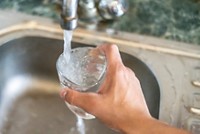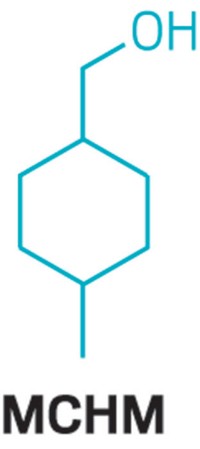Advertisement
Grab your lab coat. Let's get started
Welcome!
Welcome!
Create an account below to get 6 C&EN articles per month, receive newsletters and more - all free.
It seems this is your first time logging in online. Please enter the following information to continue.
As an ACS member you automatically get access to this site. All we need is few more details to create your reading experience.
Not you? Sign in with a different account.
Not you? Sign in with a different account.
ERROR 1
ERROR 1
ERROR 2
ERROR 2
ERROR 2
ERROR 2
ERROR 2
Password and Confirm password must match.
If you have an ACS member number, please enter it here so we can link this account to your membership. (optional)
ERROR 2
ACS values your privacy. By submitting your information, you are gaining access to C&EN and subscribing to our weekly newsletter. We use the information you provide to make your reading experience better, and we will never sell your data to third party members.
Environment
Study In Rats Finds No Major Reproductive Health Effects From Water Disinfection Byproducts
Toxicology: The animal study is the latest in an ongoing debate about the possible health effects of the chlorinated chemicals
by Catherine M. Cooney
August 15, 2013
Clean, refreshing tap water contains very low levels of byproducts that are created when municipalities treat water to kill harmful microbes. A new toxicological study sheds some light on an ongoing discussion about the long-term effects of exposure to these chemicals.

The researchers exposed three generations of rats to chlorinated drinking water and found that the water may have caused slightly delayed puberty in females and reduced sperm counts in adult male rats. But the team didn’t observe more serious reproductive problems, such as pregnancies ending prematurely or low birth weight, that have been seen in some epidemiological studies in people (Environ. Sci. Technol. 2013, DOI: 10.1021/es402646c).
Water utilities use various methods, including adding chlorine and chloramines, to disinfect drinking water. In addition to killing microbes, these chemicals oxidize organic matter in the water to produce disinfection by-products (DBPs). Scientists have identified more than 600 DBPs, and many of them are toxic. The Environmental Protection Agency regulates levels of 11 DBPs in treated drinking water, including monochloroacetic acid and chloroform.
In previous studies, environmental scientists have observed a connection between DBP exposure and reproductive problems in people and animals. But epidemiological studies have produced inconsistent conclusions, and animal studies often use doses of DBPs that are higher than those typically found in disinfected drinking water.
A multidisciplinary team of toxicologists, engineers, chemists, and risk assessors, including Michael G. Narotsky and Jane Ellen Simmons of the EPA, wanted to tackle one of the limitations of previous animal studies: Most experiments have looked only at individual DBPs or water with mixtures of known chemicals. This group wanted to test the effects of water with a mixture of DBPs, including unknown ones, because it better reflects typical U.S. drinking water.
Using a novel method, the researchers created a complex mixture of DBPs with water taken from an unnamed public water utility. They first concentrated the natural organic matter in the source water 136-fold using reverse osmosis membranes, and then disinfected the water with chlorine. The process produced a collection of 106 known and unknown DBPs.
The exposure experiment started with 200 pregnant rats. The researchers fed each rat during gestation and lactation with either the chlorinated water or purified water as a control. The team examined the offspring pups for reproductive or developmental changes. The researchers tagged some pups to continue on in the experiment as parents, and their offspring were also examined. All pups drank the same water type as their parents throughout their lifetimes.
After the four-month experiment, the scientists found that the original group of pregnant mothers fed the chlorinated water experienced no apparent ill effects on pregnancy or lactation. Also, drinking the chlorinated water had no adverse effects on prenatal survival or birth weight of their pups. But the first generation of female pups that drank chlorinated water entered puberty later than the control females, and the sperm counts for that generation of DBP-exposed adult males were 8% lower than those of the control rats.
Narotsky says that the subtle effects on sperm counts and delayed puberty are consistent with published animal research looking at individual DBPs. The EPA will continue to study DBPs in drinking water and plans to look at how other drinking water disinfection processes, including use of chloramine, affect animal health, the researchers say.
Stuart W. Krasner, a principal environmental specialist with the Metropolitan Water District of Southern California, calls the research “good work,” because the water the team tested contained a more realistic mixture of DBPs, compared to the water used in other studies. But he still thinks the water is not representative of U.S. drinking water. For example, he notes that the water’s bromide levels were much lower than those found in water coming out of taps in the U.S. He hopes future experiments use water with more representative levels.




Join the conversation
Contact the reporter
Submit a Letter to the Editor for publication
Engage with us on Twitter